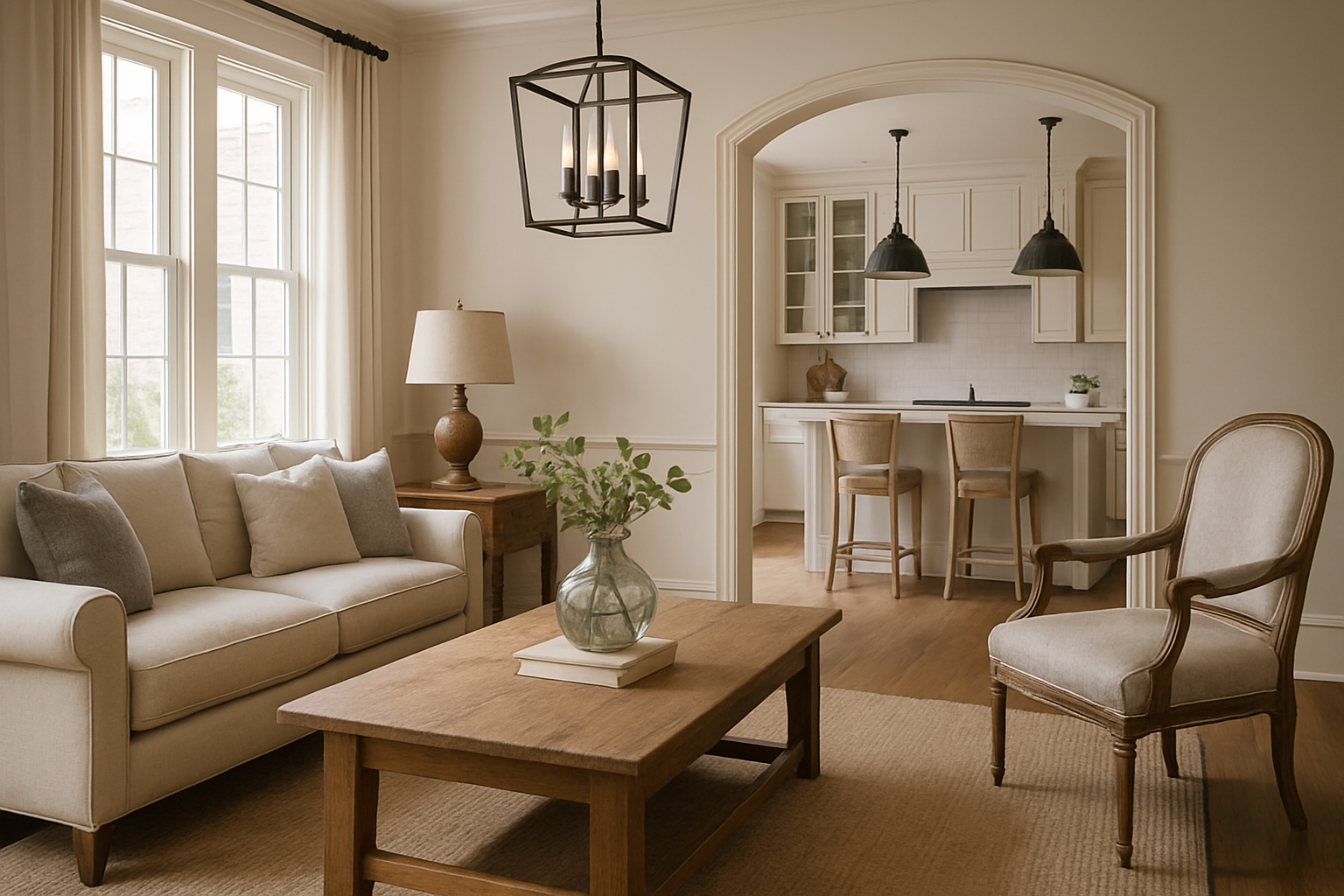"Fusion of Antique and Modern: The Rise of Transitional Style in Home Decor"
Introduction: Today's homeowners are constantly seeking innovative ways to make their homes unique, an extension of their personality. One trend that has been gaining traction is Transitional Style - a harmonious blend of traditional and contemporary elements. This style brings together the warmth of classic designs with clean, modern aesthetics, creating a timeless and elegant space.

The Emergence of Transitional Style
Transitional styling evolved as a response to the stark contrasts between traditional and contemporary designs. Traditional style, characterized by ornate details and dark woods, was seen as too heavy and outdated. On the other hand, contemporary designs, with their minimalist approach and neutral palettes, were often considered too cold and impersonal.
In the late 20th century, designers began exploring ways to find a balance. They sought to create spaces that felt both cozy and fresh, timeless yet trendy. This led to the birth of transitional style, a perfect fusion of old and new.
Characteristics of Transitional Style
Transitional style is defined by its balance of design elements. It carefully blends the comfort of traditional designs with the sleek lines of contemporary styles. The color palette tends to be neutral, allowing the design elements to take center stage. Materials and finishes mix in surprising ways, such as pairing a modern glass coffee table with an antique wooden chest.
Furniture in transitional style often features straight lines or rounded profiles with minimal ornamentation. Upholstery is typically in solid, neutral tones, with textured fabrics adding depth and warmth.
Current Trends and Insights
Design experts have noted a growing appreciation for transitional style in recent years. Homeowners are drawn to the flexibility it offers, allowing them to mix and match pieces from different eras and styles. This design approach can create a distinctive, personalized space that doesn’t feel tied to a single, rigid style.
Among the most popular trends in transitional style is the use of antique pieces in contemporary settings. An antique wooden table, for example, can become a stunning centerpiece in a sleek, modern kitchen.
Enhancing Your Lifestyle
Transitioning to a transitional style can profoundly impact your lifestyle. This design approach encourages comfort and simplicity, reducing clutter and promoting a sense of tranquility. The neutral color palette can create a soothing atmosphere, while the blend of old and new can stimulate a sense of nostalgia and modernity.
Wrapping Up
Transitional style is more than a design trend - it’s a reflection of our evolving lifestyles. It embraces the charm and comfort of traditional designs and the sleek functionality of contemporary style, creating a harmonious, engaging space. Whether you’re refurbishing an old home or decorating a new one, consider the transitional style for a unique, timeless aesthetic.





